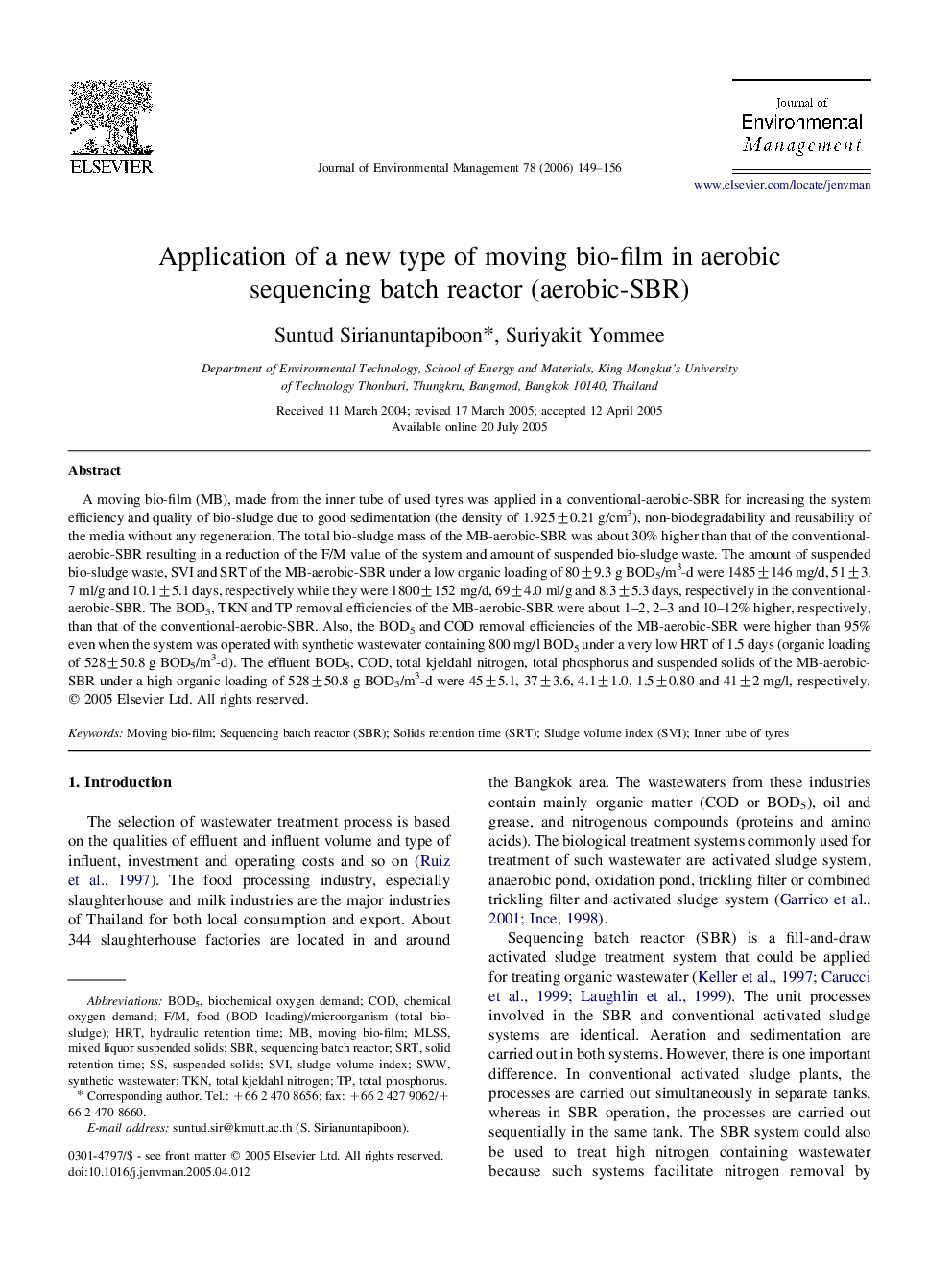| Article ID | Journal | Published Year | Pages | File Type |
|---|---|---|---|---|
| 1058522 | Journal of Environmental Management | 2006 | 8 Pages |
A moving bio-film (MB), made from the inner tube of used tyres was applied in a conventional-aerobic-SBR for increasing the system efficiency and quality of bio-sludge due to good sedimentation (the density of 1.925±0.21 g/cm3), non-biodegradability and reusability of the media without any regeneration. The total bio-sludge mass of the MB-aerobic-SBR was about 30% higher than that of the conventional-aerobic-SBR resulting in a reduction of the F/M value of the system and amount of suspended bio-sludge waste. The amount of suspended bio-sludge waste, SVI and SRT of the MB-aerobic-SBR under a low organic loading of 80±9.3 g BOD5/m3-d were 1485±146 mg/d, 51±3.7 ml/g and 10.1±5.1 days, respectively while they were 1800±152 mg/d, 69±4.0 ml/g and 8.3±5.3 days, respectively in the conventional-aerobic-SBR. The BOD5, TKN and TP removal efficiencies of the MB-aerobic-SBR were about 1–2, 2–3 and 10–12% higher, respectively, than that of the conventional-aerobic-SBR. Also, the BOD5 and COD removal efficiencies of the MB-aerobic-SBR were higher than 95% even when the system was operated with synthetic wastewater containing 800 mg/l BOD5 under a very low HRT of 1.5 days (organic loading of 528±50.8 g BOD5/m3-d). The effluent BOD5, COD, total kjeldahl nitrogen, total phosphorus and suspended solids of the MB-aerobic-SBR under a high organic loading of 528±50.8 g BOD5/m3-d were 45±5.1, 37±3.6, 4.1±1.0, 1.5±0.80 and 41±2 mg/l, respectively.
